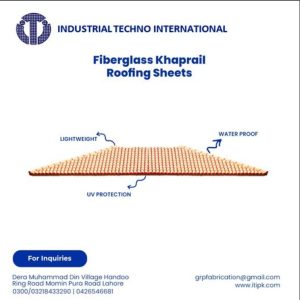ADVANTAGE OF FIBERGLASS
advantages of fiberglass, fiberglass features, fiberglass benefits, fiberglass qualities, fiberglass products, fiberglass fabrication near me, fiberglass .
Fiberglass reinforced plastics (FRP), are a composite material consisting of fiberglass reinforcements in a plastic (polymer) matrix. The variations of both reinforcements and polymers allow an incredible range of physical and mechanical properties which can be developed specifically for the performance required, unlike traditional materials such as wood, metal, ceramics, etc.
Fiberglass reinforced plastic composites are strong, lightweight, corrosion resistant, thermally and electrically non conductive, RF transparent, and virtually maintenance free. There are unique properties of FRP, that make them suitable and desirable for a wide range of product applications.
FRP Advantages include: • Strength & Durability • Versatility and Freedom Of Design • Affordability and Cost Effectiveness • Unique Physical Properties
Fiberglass is an attractive, lightweight, and durable material with one of the highest strength to weight ratios available for component fabrication. It is also highly resistant to environmental extremes. Fiberglass reinforced plastics (FRP) do not rust, are highly resistant to corrosives, and are able to withstand temperature extremes as low as -80° F or as high as 200°F.
Fiberglass reinforced plastics can be tooled, molded, and fabricated into almost any shape or design. There are few restrictions on color, finish, shape, or size. In addition to its versatility, FRP products are very affordable and cost effective solutions for almost any application, component, or part. Once molds have been created, parts can be easily duplicated at extremely cost effective price points.
FRP products are chemically inert, thus will not react chemically with other substances. FRP products are also structurally stable and exhibit the least amount of expansion and contraction with temperature fluctuations as compared to traditional materials.
Constituents of FRP: FRP composites are composed of two main constituents that can take on a number of variations.
Resin – The resin (polymer) system imparts the properties of corrosion resistance, fire retardance, and elasticity. Although, American Grating offers a number of resins tailored to specific environments, the majority of FRP components use two systems most often: polyester and vinyl esters. Polyesters offer excellent service in most environments. Vinyl esters are selected for more severe environments where optimal chemical resistance is required. All American Grating resins also include UV inhibitors. Consult our Corrosion Resistance Guide when selecting a resin for your particular application.
Reinforcements (Fiberglass) – Depending upon the manufacturing process and strength requirements, a number of fiberglass reinforcements will be utilized.
Roving – Roving are unidirectional continuous filaments of strands of fiberglass. They are utilized in all pultruded products and molded fiberglass grating products. They are the “rebar” of FRP, providing tensile and flexural strength and contribute to stiffness.
Mat – Continuous strand mats are the additional reinforcements in protruded components and some hand layup components. These components offer transverse strength.
Veil – Veils are used to enhance surface characteristics of protruded components and some hand layup parts. This constituent is applied to the outside of the part, allowing a resin rich surface to form which improves corrosion resistance and results in a more hand-friendly part.
